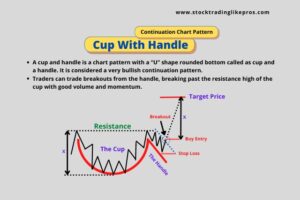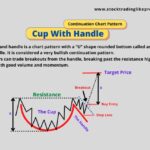Trend line trading is one of my favorite Stock Trading Strategies. This is any Pro Trader’s very basic and widely used strategy.
Let’s find out why it is such a popular strategy.
Before that, we need to understand the basic concept of a trend. I believe, many of you guys who would be familiar of what a trend is.
A trend is a series of rising prices & declining prices over a span of time.
Uptrend is a series of higher highs and higher lows and Downtrend is a series of lower highs and lower bottoms.
A visual inspection is enough to easily gauge you the direction of the trend.
Entering & Riding on such an uptrend or downtrend is what this trading strategy is all about.
How trend trading strategy works?
1. Identify the direction of the trend in the time frame you are trading
If you trade in daily EOD chart, identify the trend in daily chart only. You can gauge the trend direction using Trend Following Indicators like Moving Averages or by drawing trend-lines.
2. Confirm the trend through higher time frame
It is very critical to understand that the daily trend is confirmed through the higher timeframes – weekly, monthly etc…
3. Ensure you have a strong trend
A strong trend (uptrend or downtrend) is very important for this strategy.
You can use the ever popular ADX Indicator to measure the strength of the trend effectively. ADX value above 25 is a considered a strong trend and good for this strategy.

4. Look for these structures
- Moving Average Cross Over (price crossing the moving average from below)
- Pullbacks to Moving Average line
5. Buy Trade Signal
Buy when one of the below conditions are met
- When Smaller Moving Average cross higher Moving Average from below. E,g 20 SMA crossing over 50 SMA from below
- When price cross moving average – 20/50/200 SMA (20/50 SMA for Swing Traders & Position traders / 200 SMA for investors).
- Price pullbacks to Moving Average Lines. Confirmation can be seen in price creating reversal candlesticks
6. Sell Trade Signal
Opposite of Buy Trade conditions above.
7. Confluence of other buy signals
Look for confluence of through other indicators – Stochastic / MACD / RSI etc. Or Candlestick Patterns, Fibonnaci retracement or break of Support / Resistance
8. Stop Loss
A notch below the moving average or support.
9. Exit
Break of the trend line or Support or Price going down 20/50 SMA or Crossover of the moving average. This depends upon your trading style and your holding timeframe.
Beware: Before you enter a trend, it is very crucial that you know the current trend direction, strength of the trend and ride with the trend direction and not against the trend.
The key is to ride the uptrend or downtrend only after the trend is well established. Not before, in anticipation of the trend.
Let’s understand this Trend trading stock strategy with the below charts of ICICI
Daily chart

Weekly chart confirming Uptrend

In the ICICI daily chart, it is evident that there is a clear uptrend.
We confirm this by drawing a trendline joining 3 or 4 lows. The slope in the moving averages (20 & 50 SMA) also indicates the uptrend.
Now check the higher time frame for confirmation of the trend. The weekly chart above also indicates an uptrend.
So, we can enter this trade.
But, where do we make our entry trade?
In the daily chart, we can see many price points where we can enter the trade.
1st Buy signal is around price 155 just after price starts going uptrend and 20 SMA cross over 50 SMA from below.
2nd & 3rd Buy signal is also seen around Price 172 and 188 when price sees a pullback to 50 SMA and then price cross 20 SMA.
Where to put the stop loss?
After you made the buy trade, you need to put a stop loss just in case your stock changes direction & plummets down.
We can place a protective stop just below the 20/50 SMA line or below Support depending on your risk level .
Where to exit the trade?
Break of trendline or price crossing down of the 20 SMA or next support as per your trading style.
In this example, I can see confluence of 3 signals to exit the trade around price 200-205 : 20 SMA Cross down 50 SMA, Trend line break and Major support broken around this price level.
Few interesting questions one could have in mind for Trend line Trading Strategy
What should be my target price?
Do I wait to sell the price till Trend line breaks or price cross Moving Average, e.g. around 200-205 price in the above example. You would think – Hey, that is a long wait for a short term trader?
Can I exit the trade at some level, if I am already in profit?
The answer lies in your trading style & your holding timeframe – Intraday, Swing, Positional or Mid to Long term trading style.
As a Swing Trader, I normally set my target price at the next major Resistance or Swing high.
And as a rule, I look for at-least 1:2 Risk Reward ratio in whatever trades I get into.
In the above example, assuming I buy the stock at 172 (when price cross over 20 SMA), I will put my stop loss at 168 (below 20 SMA).
And look for target price (where I would sell & exit and the trade) at 180, which is the next resistance. So, the Risk reward ratio is 1:2 (172-168: 180-172)
Hope you guys now understand why Trend line Trading Strategy is one of my mostly preferred strategy.
It is not just a very simple strategy but is also a very good low risk strategy with high success ratio.








